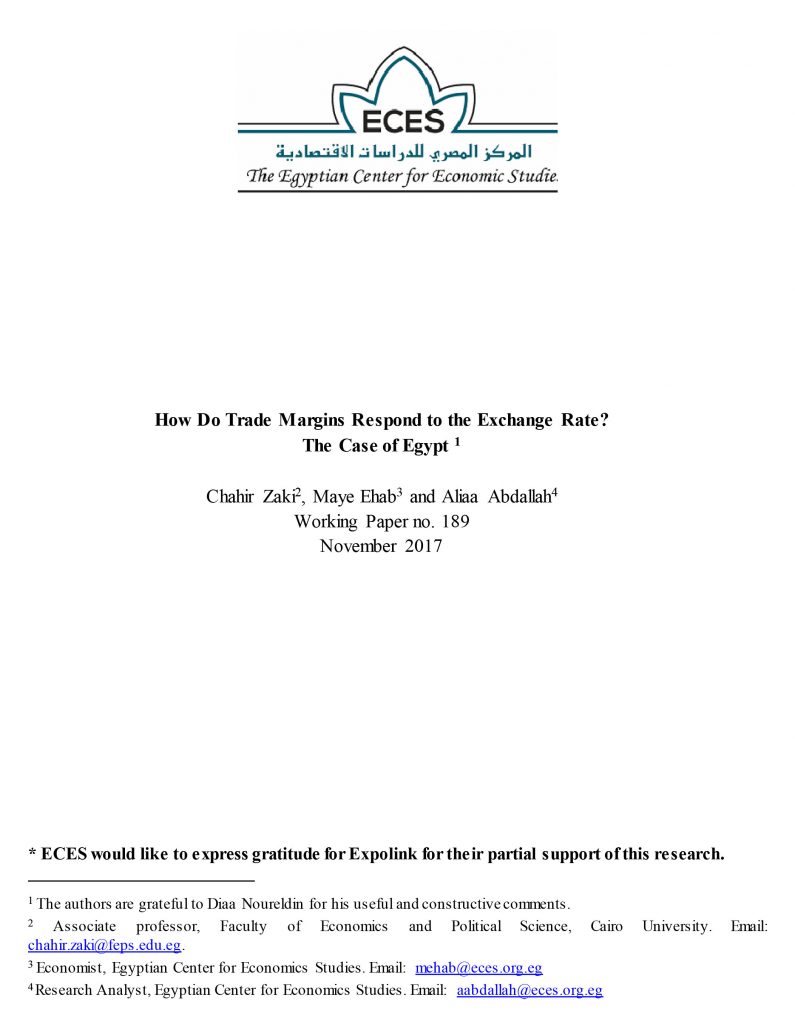Using monthly firm-level and sector-level data for the period 2005-2016, this study tries to examine the impact of devaluation on the increase in the quantity of exports, as well as the ability to export new products and/or venture into new export markets. In other words, this paper seeks to examine how both the intensive (the quantity of exports) and the extensive (the probability of exporting a new product to a new destination, exporting a new product to an existing destination or exporting an existing product to a new destination) margins to trade are affected by the devaluation of the Egyptian pound, using firm-level data. Exchange rate is measured by the real effective exchange rate and the exchange rate misalignment. We find that while a depreciation of the real exchange rate increases the value of exports (intensive margin), the quantity of exports is not affected showing that the price effect is more significant than the quantity effect. In other words, depreciation lowers the foreign currency price of exports, but does not increase the quantity of exports. Furthermore, the number of destinations and the number of products (extensive margins) respond positively to exchange rate depreciation. At the sectoral level, the intensive margin seems to matter for some products more than others. Indeed, the most beneficial group includes products that are sensitive to real depreciations and for which Egypt has a comparative advantage. These products are fruits and vegetables, apparel and clothing, fibers, mineral fuels and oils and some chemical products. At the destination level, European countries seem to be the most sensitive.

How Do Trade Margins Respond to the Exchange Rate? The Case of Egypt
08-11-2017
Author(s): Chahir Zaki, Maye Ehab and Aliaa Abdallah
Publication Number: ECES-WP189-E
